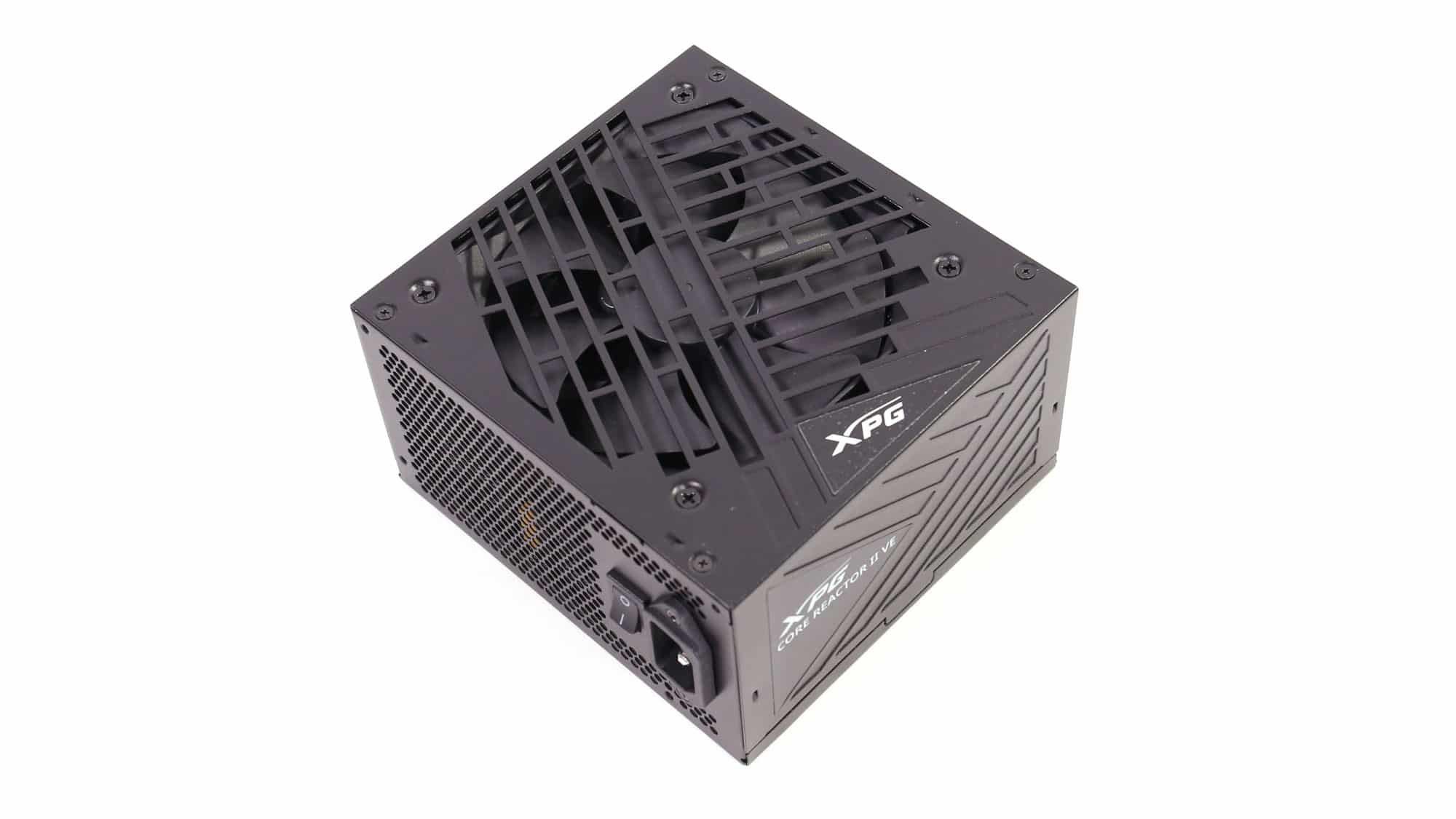The XPG Core Reactor II VE line consists of more affordable version of the Core Reactor II units, using the same CWT platform but with less cables and more affordable caps. This allows for an about 20 dollar price reduction in the price tag, which is a notable difference.
The XPG Core Reactor II VE 850W will be included in my best ATX v3.x & PCIe 5.x PSU picks article.
XPG already has a Core Reactor PSU line in its portfolio, but it needed something more affordable, so it came up with the Core Reactor II Value Edition (VE) line. This line meets the Intel ATX v3.1 specifications. It uses the same Channel Well Technology platform (codename CSE) as the Core Reactor II models but with some changes to lower production costs. The Core Reactor II VE line consists of three models, with capacities ranging from 650W to 850W.
Since the Core Reactor II VE models don’t use such high-quality capacitors as the non-VE models, they come with a shorter warranty, which still is pretty long at seven years. Thankfully, the cooling fan remains the same, so I can’t help but wonder how much the production cost shrinks thanks to different caps and the reduced number of cables. Caps cost a lot; the same goes for the cables because copper doesn’t come cheap. XPG plans on releasing the VE models at about $20 lower than the non-VE models, making them a good alternative for users wanting to save as much as possible.
I will evaluate the Core Reactor II VE 850W unit, the line’s flagship, in this review. It is strong enough to support a mid-to-high-level graphics card and a potent processor. It comes with a 600W 12V-2×6 cable, which means it can support up to NVIDIA RTX 4090 graphics cards on paper, but this also depends on the CPU. If you use an Intel 14900K, which can exceed 400W sustained power with PL1/2 unlocked, there won’t be much juice left for the GPU.
- Manufacturer (OEM): CWT
- Max Power: 850W
- Cybenetics Efficiency: [115V] Cybenetics Gold (87-89%) [230V] Cybenetics Gold (89-91%)
- Noise [115V]: Cybenetics A- (25-30 dB[A])
- Compliance: ATX v3.1, EPS 2.92
- Operating Temperature (Continuous Full Load): 0 – 50 °C
- Alternative Low Power Mode support: Yes
- Power 12V combined: 850W
- Number of 12V rails: 1
- Power 5V + 3.3v: 120W
- Power 5VSB: 15W
- Cooling: 120mm Fluid Dynamic Bearing Fan (HA1225H12F-Z)
- Semi-Passive Operation: ✗
- Modular Design: Yes (Fully)
- High Power Connectors: 2x EPS (2x cables), 3x PCIe 6+2 pin (3x cables), 1x PCIe 12+4 pin (600W)
- Peripheral Connectors: 6x SATA (2x cables), 2x 4-pin Molex (2x cables)
- ATX Cable Length: 650mm
- EPS Cable Length: 750mm
- 6+2 pin PCIe Cable Length: 550mm
- 12+4 pin PCIe Cable Length: 600mm
- Distance between SATA / 4-pin Molex: 150mm
- In-cable capacitors: No
- Dimensions (W x H x D): 150 mm x 86 mm x 140mm
- Weight: 1.44 kg (3.17 lb)
- Warranty: seven years
- Street price (excluding VAT): around 20$ lower than the price of the Core Reactor II 850
Power Specifications
| Rail | 3.3V | 5V | 12V | 5VSB | -12V | |
| Max. Power | Amps | 22 | 22 | 70.8 | 3 | 0.3 |
| Watts | 120 | 849.6 | 15 | 3.6 | ||
| Total Max. Power (W) | 850 | |||||




Thank you for the review. What kind of problem could it be if it drops below 3.14V? Thanks for the answer in advance.
It will apply high stress to the corresponding DC-DC converter that expects 3.3V at its input. This is why the ATX spec sets as the lowest limit the 3.14V level.
Thank you for the information. Then I’ll go back to the beginning and start looking for a new psu. I benefit a lot from your articles. Thank you.